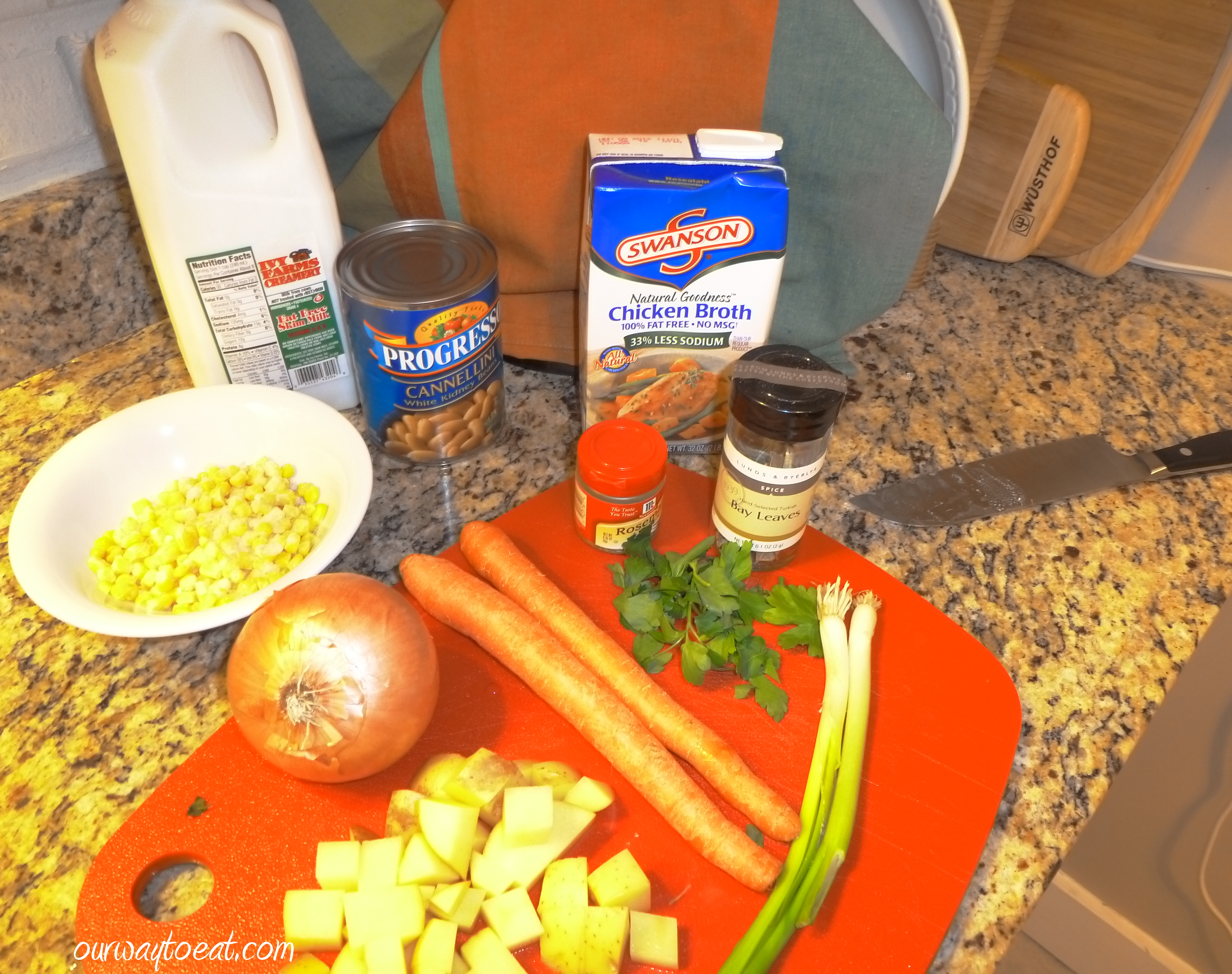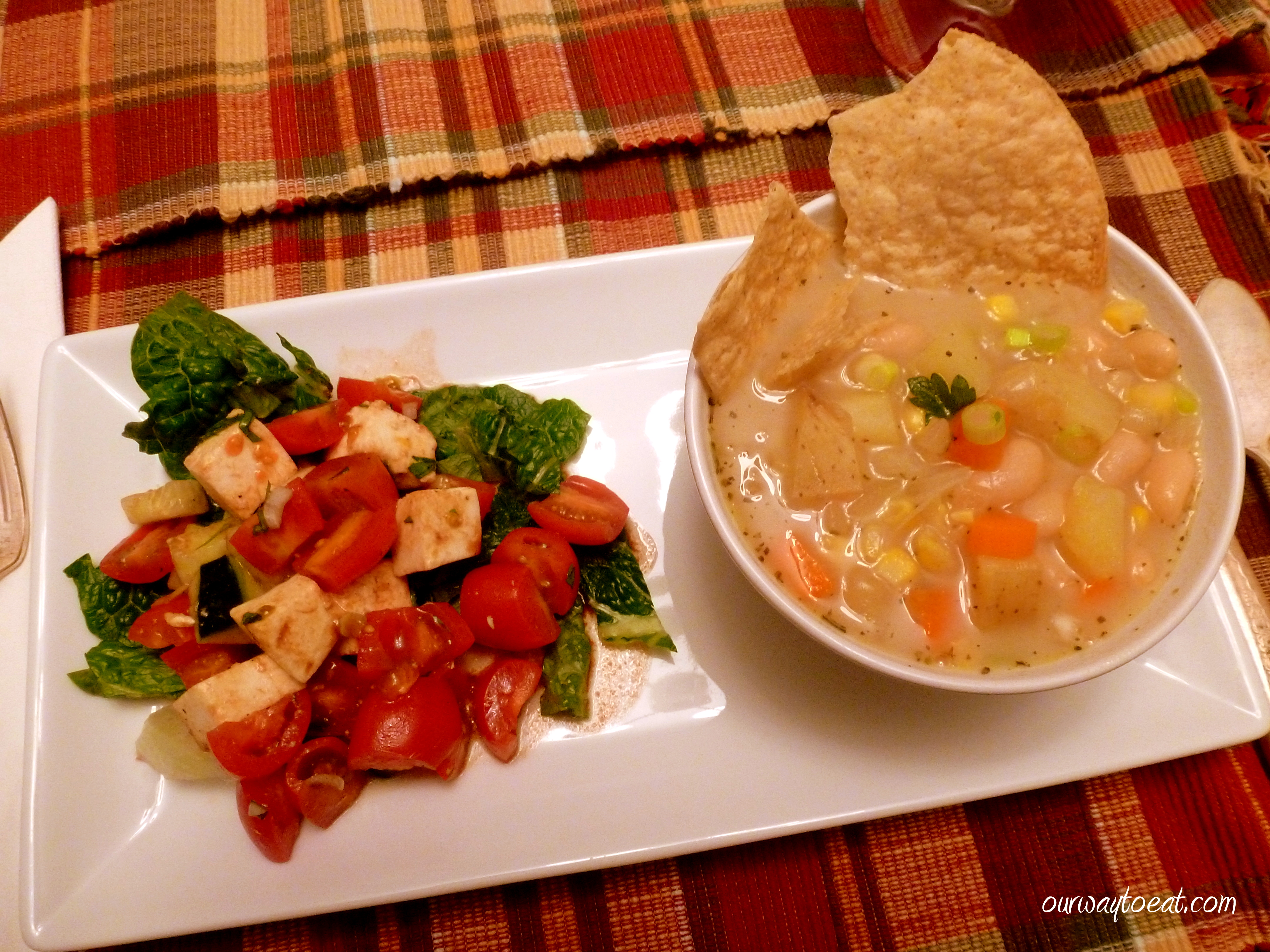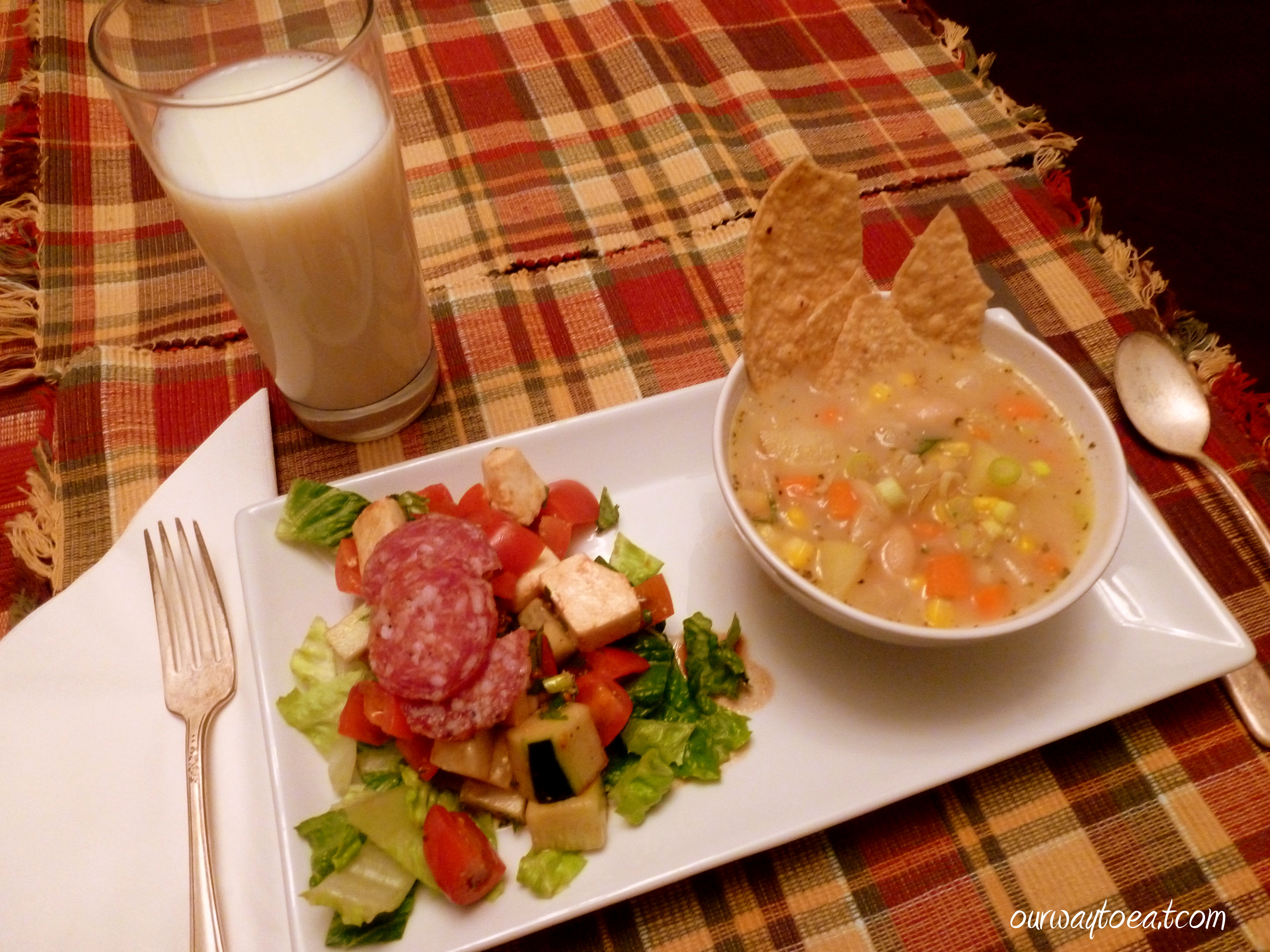It is a good indication that we are getting pretty low on groceries and fresh produce when I decide what is for dinner by googling the few ingredients we have left to find an idea. Tonight, I poked around the kitchen and found a can of white beans, a potato, and a half a bag of frozen corn to work with. Those three ingredients sounded like a good base for a soup. I wasn’t feeling like a chunky Tuscan White Bean Stew, or a creamy Rosemary White Bean Soup even though they looked tasty. We didn’t have half the ingredients for this luscious looking Corn Chowder with Chilies by Pioneer Woman and we wanted something lighter. As far as I can remember, I don’t think I’ve ever combined white beans, corn and potato in one pot, but it seemed like these 3 pale, starchy comforters had to go together. I thought “there must be a recipe for this white bean, corn and potato chowder!” I immediately found two, fairly similar recipes that sounded tasty, [here and here]. I took cues from both recipes, made a few adjustments of my own and ended up with a soup that was healthy and warming that we both enjoyed. First, I assembled my ingredients.
I think it is a good sign about a recipe when the ingredient list is short. For one thing, in a simple recipe each ingredient plays a vital role in the dish as a whole. There is also a better chance that your pantry and fridge will contain what you need so you don’t have to run to the store. Most importantly you won’t have to pull out your hair trying to follow a complicated recipe or spend your evening chopping and measuring a zillion ingredients. My White Bean, Corn and Potato Chowder contained:
- One cup of Frozen Corn.
- 1 16 ounce can of Cannellini Beans. — I happened to have a large can of beans so I used it, but you’d be fine with a 14 ounce can. If you are up for preparing dry beans, which sadly, I am not, you should use about 1 cup of dry beans, soaked and cooked in water until tender.
- 1 Yukon Gold Potato washed and chopped.
- 1/2 of a yellow onion, diced.
- 1 carrot, peeled and diced — I ended up using only one carrot, even though my photo contains two.
- 1 stalk of celery, chopped. –I didn’t have any celery, but normally, I would include it. Diced Onions, Carrots and Celery, or a mirepoix if you are cooking in French, makes a solid aromatic base for almost any soup or sauce.
- 1 four cup carton of Reduced Sodium Chicken Broth or Vegetable Broth.
- For Garnish: 1 thinly sliced green onion and coarsely chopped flat leaf Italian parsley are both optional, but good.
- About 1/2 a teaspoon each of crushed dried Rosemary, and dry Thyme.
- A splash of skim milk, or half and half, or heavy cream, depending what fits into your diet.
- A small amount of Olive Oil for sautéing the veggies.
- Salt and Pepper to taste.
We have 2 people eating in our house most nights, so I try to cut soup recipes down to 4 portions, so that we each get to have a hearty bowl for supper and a smaller bowl for lunch the next day. It took me two years to figure out that I need to cut down most recipes. Having a few frozen portions is great for lunches at work or an easy supper, but a freezer can fill up fast in the winter when I feel like making a new pot of soup a few times per week. If you have a bigger head count, or feel like stockpiling soup for lunches and lazy days, you can easily double or triple this recipe.
Once I had all of the veggies for the chowder chopped, I began by sautéing the onion and carrots. I rinsed the cannellini beans, and mashed about half of them on a cutting board with a potato masher. I did this for several reasons. Since I wanted the chowder to be light and healthy I decided not to use half and half or cream in my chowder which are traditional chowder ingredients. Mashed white beans added velvety texture to the soup liquid that it would otherwise lack without cream. I used a potato masher because I don’t have an immersion blender* and lugging out the blender or food processor to puree half of the soup is far too much effort for me on a Tuesday night. The potato masher works quite well to create a rustic creaminess and it cuts down on dish washing which is also a plus. When the carrots and onions began to get soft in my enamel dutch oven, I added the rest of the ingredients except the milk and garnishes. I let the soup simmer for a good half hour to 40 minutes. This gave me time to set the table, check Facebook and chop up some grape tomatoes, fresh mozzarella and leaves of romaine lettuce for a small salad, along the lines of a caprese, minus basil. I dressed the salad with balsamic vinegar, salt and pepper and Trader Joe’s 21 Seasoning Salut herb mixture. Once the chowder was hot and all the flavors combined, I removed the pot from the heat. I mashed the entire mixture of veggies little a more with the potato masher right in the soup pot to allow the carrots, corn and potatoes to add body to the liquid in the chowder. Right before serving the chowder I stirred in a splash of milk. I served the chowder in a small bowl with the salad on the side of the plate.
On top of Bjorn’s salad I added a few this slices of Sopprasetta, a dried, cured Italian salami.
We loved this chowder. It was warm and satisfying, but still light and healthy. It will reheat well for our lunch, and we will able to eat the whole pot in two meals. This meal made good use of the last few vegetables in the house. Even if my fridge is fully stocked, I’d make it again.
* An immersion blender might be a good gift idea, hint, hint.











